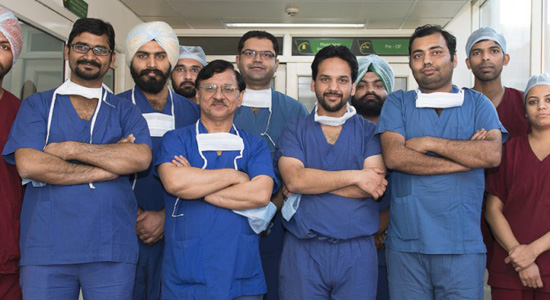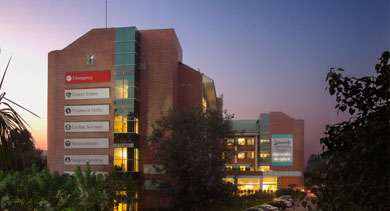Life after Knee Replacement Surgery
The knee joint is the most important joint of the body. Healthy knee joint improves the quality of life. The knee are the most easily injured part of the body once knee joint damaged, worn out, painful, stiff and you are forced to restrict activities when need to knee replacement.
Today advanced medical technology makes it possible to replace the knee joint with an artificial one that reduces pain, allow you to strength your legs and improve your range of joint motion.
Things should do after the joint replacement:
The following things should be kept in mind after the knee replacement surgery.
- Keep the wound area clean and dry: The wound area should be clean and dry to reduce the cause of infection.
- Skin discoloration: if your wound place appears red or begins to drain, inform your doctors.
- Check temperature: check your temperature regularly and inform your doctors if it exceeds 38c.
- Observe the wound area: if you observe a swelling apply ice –packs over the swelling intermittently.
- Adjusting to Your New Knee: adjusting to your new knee with regular walking using a walker or crutches.
- Exercise: performs exercises to strengthen things and calf muscles.
- Getting around: Your new knee will make it much easier to engage in a diverse array of activities. However, it’s important to avoid too much stress on the joint. Avoid squatting, twisting, jumping, and other movements that could damage the knee.
- Medication: medication is important after the joint replacement, a proper diet and exercise regimen along with icing will reduce inflammation and strengthen the joint. This results in reduced pain.
- Clothing: knee replacement surgery the size of the scar depends on the type of procedure you have and it will diminish somewhat over time. You may want to wear long pants or longer dresses to hide or protect the wound—particularly in the beginning. Wear sunscreen and clothes that provide protection from sun.
- Drive: after the knee replacement avoid the drive 6 to 8 weeks.
Things should not do after knee replacement:
The following things should not do after knee replacement
- Do not play high impact sports.
- Do not run or jump and avoid lifting the heavy weight things.
- Avoid gaining weight which improves the movement power of joint.
- Do not shower or bathe until the sutures are removes.
Exercise after knee surgery:
Two types of exercise are suggested after the knee replacement
Physical therapy exercises:
Regular exercise to restore your knee mobility and strength and a gradual return to everyday activities are important for your full recovery. The following exercise help to recovery.
- Swimming: swimming improves muscle strength and endurance without any pressure or stress on the replace joint. Swimming will take about 6 to 8 weeks after the surgery.
- Straight leg raises: Tighten the thigh muscle with your knee fully straightened on the bed, as with the Quad set. Lift your leg several inches. Hold for five to 10 seconds. Slowly lower.
- Ankle pumps: Move your foot up and down rhythmically by contracting the calf and shin muscles. Perform this exercise periodically for two to three minutes, two or three times an hour in the recovery room.
- Knee straightening exercise: Place a small rolled towel just above your heel so that it is not touching the bed. Tighten your thigh. Try to fully straighten your knee and to touch the back of your knee to the bed. Hold fully straightened for five to 10 seconds.
- Bed-supported knee bends: Bend your knee as much as possible while sliding your foot on the bed. Hold your knee in a maximally bent position for 5 to 10 seconds and then straighten.
- Sitting-supported knee bends: While sitting at bedside or in a chair with your thigh supported, place your foot behind the heel of your operated knee for support. Slowly bend your knee as far as you can. Hold your knee in this position for 5 to 10 seconds.
- Sitting-unsupported knee bends: While sitting at bedside or in a chair with your thigh supported, bend your knee as far as you can until your foot rests on the floor. With your foot lightly resting on the floor, slide your upper body forward in the chair to increase your knee bend. Hold for 5 to 10 seconds. Straighten your knee fully.
- Standing knee bends: Standing erect with the aid of a walker or crutches, lift your thigh and bend your knee as much as you can. Hold for 5 to 10 seconds. Then straighten your knee, touching the floor with your heel first. Repeat several times until fatigued.
- Assisted knee bends: Lying on your back, place a folded towel over your operated knee and drop the towel to your foot. Bend your knee and apply gentle pressure through the towel to increase the bend. Hold for 5 to 10 seconds; repeat several times until fatigued.
- Knee exercise with resistance: You can place light weights around your ankle and repeat any of the above exercises. These resistance exercises usually can begin four to six weeks after your surgery. Use one- to two-pound weights at first; gradually increase the weight as your strength returns.
- Exercycling: Exercycling is an excellent activity to help you regain muscle strength and knee mobility. At first, adjust the seat height so that the bottom of your foot just touches the pedal with your knee almost straight. Peddle backward at first. Ride forward only after a comfortable cycling motion is possible backwards.
Advanced exercises and activities:
Knee replacement muscles of your affected leg become weak due to lack of activity before and after surgery. These exercise well help you recover faster.
Diet after knee replacement surgery:
- While you are recovering in the hospital you will start to eat a normal diet.
- In the diet includes the iron and vitamin c supplements.
- Drink plenty of fluids.
- Avoid vitamin k supplements after surgery.
- Try to avoid coffee, tea, alcohol and smoking.
- Watch your weight to avoid putting more stress on the replaced joint.
- Vitamin D plays an important role in bone health because it helps to increase bone density.
- Some research shows that vitamin E—particularly vitamin E oil—can aid in wound healing and decrease scar formation.
- Useful herbal supplements may include green tea, rosehips, chickweed, witch hazel, willow bark, echinacea, and bromelain. Many of these are said to reduce inflammation and swelling or fight infections and promote wound healing. However, there’s no conclusive evidence that these substances provide any benefit.
Precautions from external factors in daily life:
- Driving: it is safe to resume driving when you are no longer taking narcotic pain medication, and when your strength and reflexes have returned to a more normal state. Your doctor will help you determine when it is safe to resume driving.
- Sleeping positions: You can safely sleep on your back, on either side, or on your stomach.
- Return to work: Depending on the type of activities you do on the job and the speed of your recovery, it may be several weeks before you are able to return to work. Your doctor will advise you when it is safe to resume your normal work activities.
- Sports and exercise: Continue to do the exercises prescribed by your physical therapist for at least 2 months after surgery. In some cases, your doctor may recommend riding a stationary bicycle to help maintain muscle tone and keep your knee flexible. When riding, try to achieve the maximum degree of bending and straightening possible.
- Air travel: Pressure changes and immobility may cause your knee joint to swell, especially if it is just healing. Ask your doctor before you travel on an airplane. When going through security, be aware that the sensitivity of metal detectors varies and your artificial joint may cause an alarm.Tell the screener about your artificial joint before going through the metal detector. You may also wish to carry a medical alert card to show to the airport screener.
- Other activities: avoid activities that put stress on the knee. These activities include playing tennis, badminton, football, baseball, jumping, squats, skiing and jogging.



I am a couple of days shy of five months after TKR of right knee. I was released to go back to work after six weeks and I manage ok. What I wonder about is the popping and clicking, a little stiffness still and at times a little pain. Of course my right leg is a little longer since it was straightened and I walk a little funny. Maybe I am expecting to much to soon, fact is I need to have the left knee done and wanted that in the fall but I am not comfortable enough with the right yet. I hope to get it done in January 2019 a year after the right. I have full motion of the knee, but a little pain to touch on top just above knee cap. Maybe I should be walking more? It just bothers me and mainly because it is weird. any comment would be appreciated. thanks